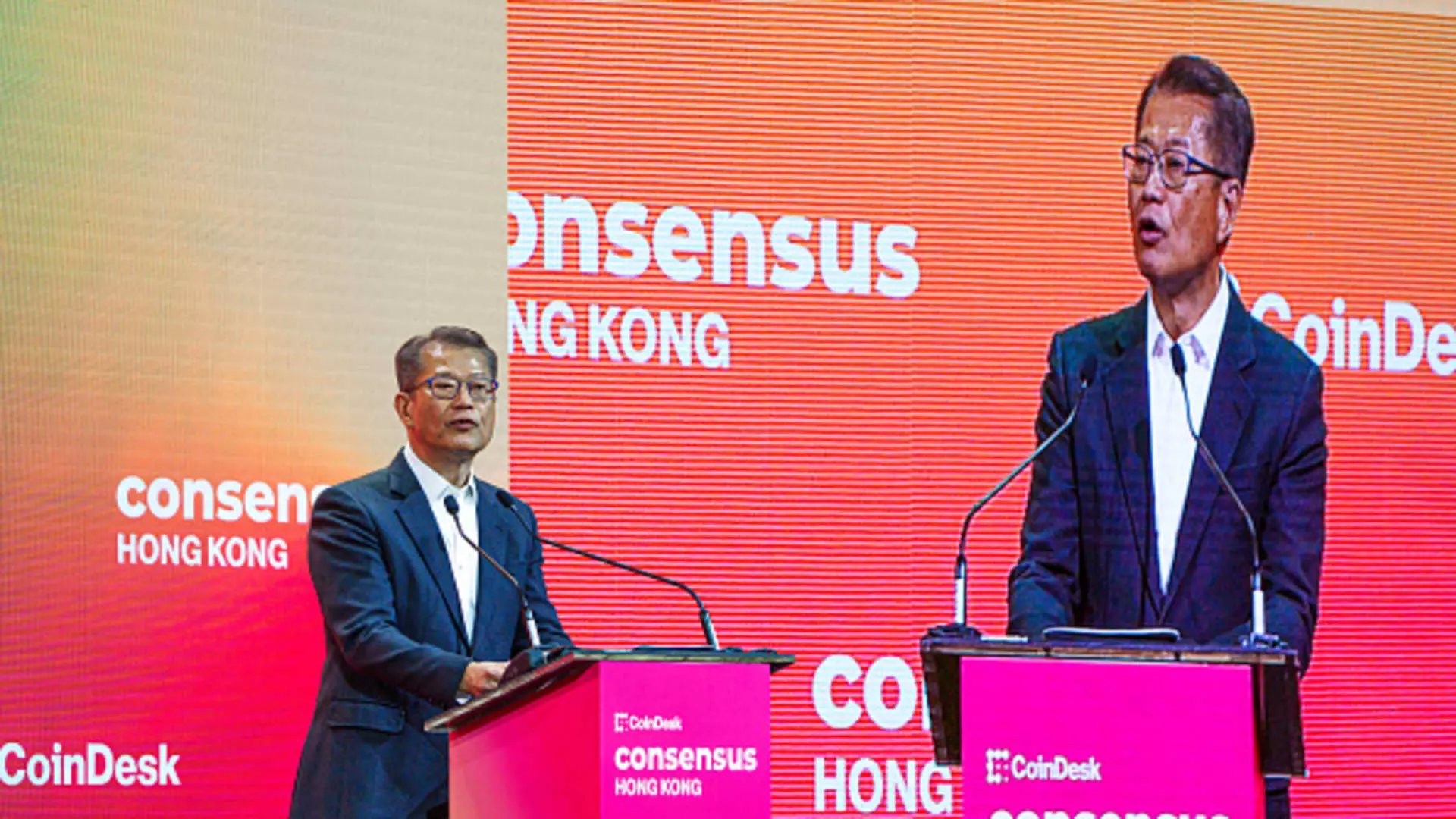China’s long-standing ban on cryptocurrency trading has been a hallmark of its tightly controlled financial policy. Yet, this official stance is increasingly at odds with dynamic market realities, especially in Hong Kong. While mainland China continues to clamp down on virtual asset trading, Hong Kong—operating under a distinct regulatory framework—has emerged as a burgeoning hub for crypto innovation. This friction reveals a deep, unresolved tension in China’s policy approach: an attempt to curb financial risks internally, while simultaneously experimenting with crypto-forward initiatives externally.
This dissonance is most vividly illustrated by the explosive market response surrounding Guotai Junan International, a mainland-backed brokerage in Hong Kong. After securing the first mainland-approved license for virtual currency trading, its shares nearly tripled, catapulting the firm to the highest trading volumes, temporarily surpassing even Alibaba’s storied market capitalization on the exchange. The sheer investor appetite speaks to a pent-up demand among Chinese professionals and institutions for crypto exposure, that the mainland’s stringent rules failed to satisfy.
Stablecoins: The New Frontier of Financial Influence
The recent regulatory push in Hong Kong to formalize stablecoins—digital currencies pegged to government-issued fiat money—is more than a mere business convenience. As Morgan Stanley economists astutely noted, Beijing’s growing interest in stablecoins signals anxiety over potential U.S. legislative moves that could entrench dollar hegemony through crypto channels. If the U.S. consolidates dollar dominance by regulating stablecoin issuers tightly, China risks losing influence over global financial infrastructure, especially in the digital currency domain.
Stablecoins are inherently powerful precisely because they blend the decentralization ethos of cryptocurrency with the relative stability of fiat currencies. Hong Kong’s legal embrace of stablecoins, embodied by new bills, positions it as a regulatory sandbox where the Chinese government can experiment with alternative payment systems while maintaining oversight. This is an astute, pragmatic pivot away from outright bans, signaling that the government recognizes innovation and control are not mutually exclusive.
The Corporate Rush to Wrestle Control of Digital Assets
Following Guotai Junan’s lead, incumbents like China Renaissance and TF Securities are aggressively positioning themselves to capitalize on the digital asset wave. China Renaissance’s $100 million investment plan in crypto and Web3 projects, alongside the recruitment of former Huobi Americas CEO Frank Fu, underscores how seriously mainland firms are now taking this sector—even if official mainland policy remains restrictive.
TF Securities’ noteworthy gains after its Hong Kong subsidiary obtained virtual asset trading licenses confirm that these firms expect to ride a long-term trend rather than short-term hype. However, while these surges indicate enthusiasm, they are more reflective of strategic positioning around a nascent theme than immediate blockbuster business growth. Market actors appear willing to absorb short-term volatility to establish early dominance, anticipating that access to virtual asset markets will be a crucial competitive lever in the coming decade.
Why Hong Kong, Not Mainland China?
Hong Kong’s special status within China’s sovereign framework makes it the ideal proving ground for innovative financial reforms. Mainland authorities continue to wrestle with the systemic risks posed by unregulated cryptocurrency speculation among a population of 1.4 billion. The stakes are too high to permit uncontrolled crypto activities, which could facilitate money laundering, capital flight, and destabilizing financial bubbles.
Conversely, Hong Kong’s freer regulatory environment allows testing of digital currencies under strict supervision without jeopardizing mainland stability. This “sandbox” approach permits Beijing to observe, learn, and adapt its policies before rolling out more comprehensive frameworks. It also creates a gateway for Chinese firms and investors to dabble in digital asset markets without colliding with mainland prohibitions. The expansion of high-profile global events like the Consensus cryptocurrency conference to Hong Kong further primes the city as Asia’s crypto capital.
The Risk of China Falling Behind in Digital Finance
China’s contradictory stance toward cryptocurrencies is a geopolitical and economic gamble. On one hand, the government’s caution is understandable—unchecked crypto trading can endanger financial stability. On the other, as Morgan Stanley’s analysts warn, dismissing stablecoins and their evolving ecosystem risks sidelining China in the race to establish global digital payments infrastructure.
Stablecoins offer a potential bypass to traditional banking, reshaping cross-border trade and international finance. Mainland giants like JD.com, partnering with international banks like Standard Chartered, are already engaging in Hong Kong’s stablecoin initiatives to facilitate overseas sales and payments. Ignoring these developments could undermine China’s ambitions to propel its digital yuan and expand its financial clout abroad.
Ultimately, China’s real challenge is finding a middle path—a regulatory paradigm that curbs speculative excesses without squashing innovation. The surge in Hong Kong’s crypto-linked shares is a clarion call that the market is hungry for such balance. Whether Beijing rises to this challenge will be pivotal for the nation’s financial future and its broader quest to lead in the digital era.

